Abstract
STUDY OBJECTIVE--The aim was to investigate which factors in the operating procedure of the gastric cancer screening programme carried out by local Japanese municipalities affect the participation rate. DESIGN--This was a cross-sectional study. Data were mainly obtained by questionnaire completed by the person in charge of health in each municipal council. Information was sought on screening motivation, screening programme organisation, payment for the examination, the scheduling and filing system, and community manpower. Data on the participation levels were obtained from the health data service system published by the Ministry of Health and Welfare in 1991. SETTING--All of Japan's 3268 local municipalities were sent the questionnaire. Altogether 2795 municipalities responded (85.5% response rate). SUBJECTS--The local municipality was regarded as the study unit. The municipalities were classified into two groups--small municipalities, those with < 10,000 population aged 40 years and over, and large municipalities, those with > 10,000 population aged 40 years and over. MAIN RESULTS--The participation rate in the screening programme varied according to the municipality population size and age. Small municipalities had higher participation rates. The rate in people aged 60-69 years was highest and that in those aged 70+ years was lowest. The participation rate was positively associated with factors related to the operating procedure before (for example, giving information about screening), during (for example, assisting the screening staff), and after (setting up the relevant filing systems) the gastric examination. CONCLUSIONS--The results suggest that personal motivation, manpower in local residents' organisations, scheduling time for convenience, and a basic filing system for individual data, especially for people who have not participated in the programme for a few years, are important in increasing participation.
Full text
PDF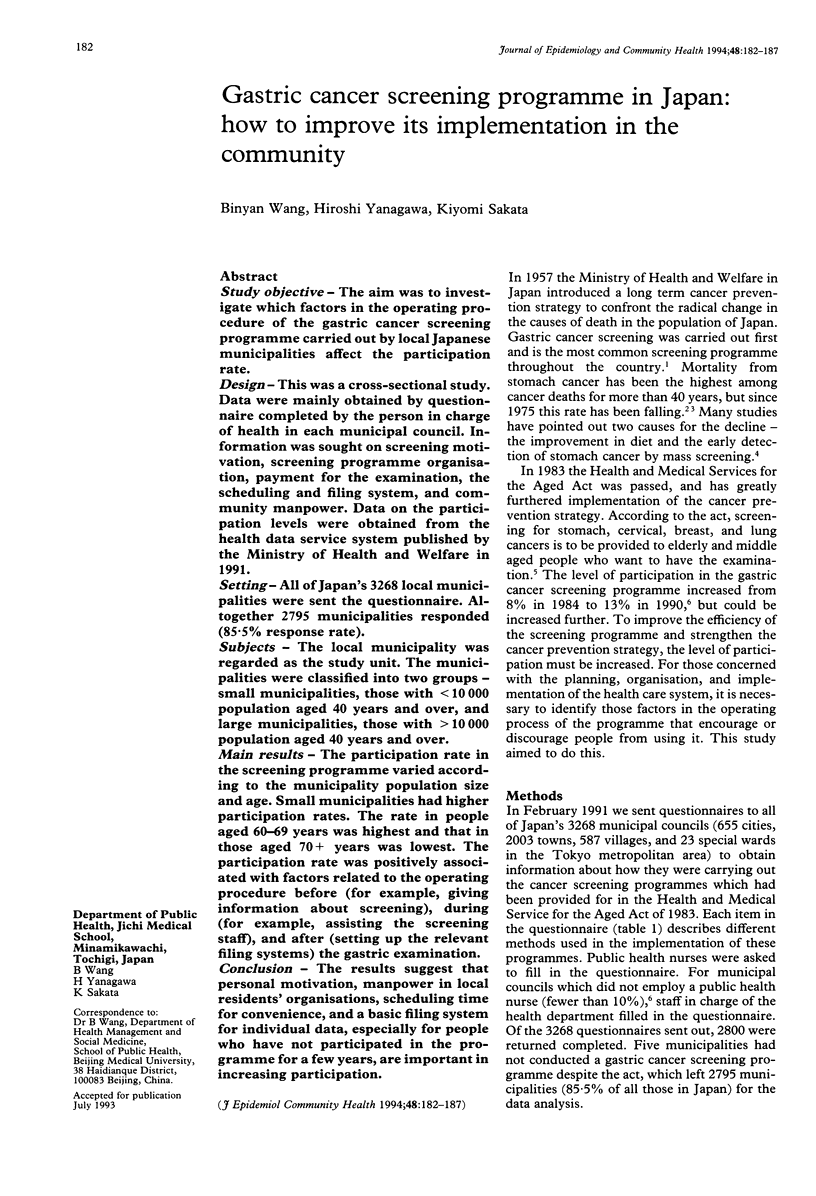
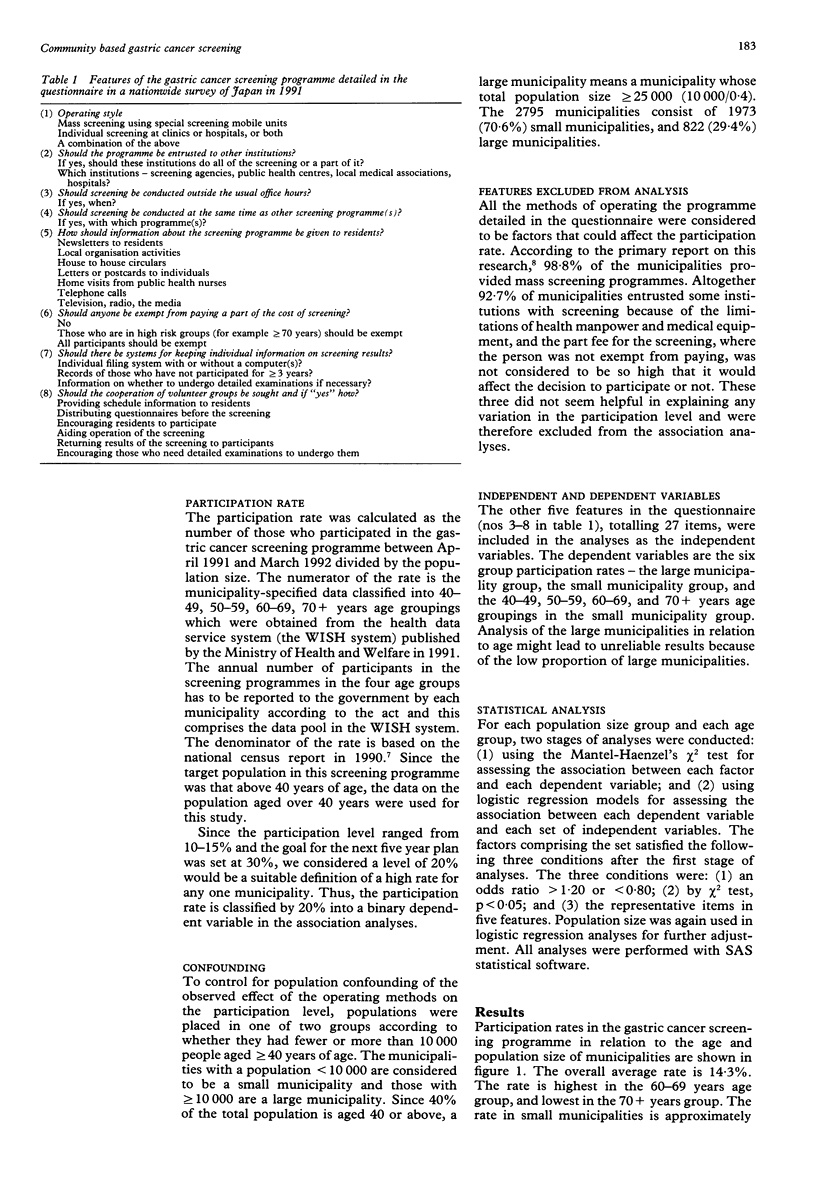
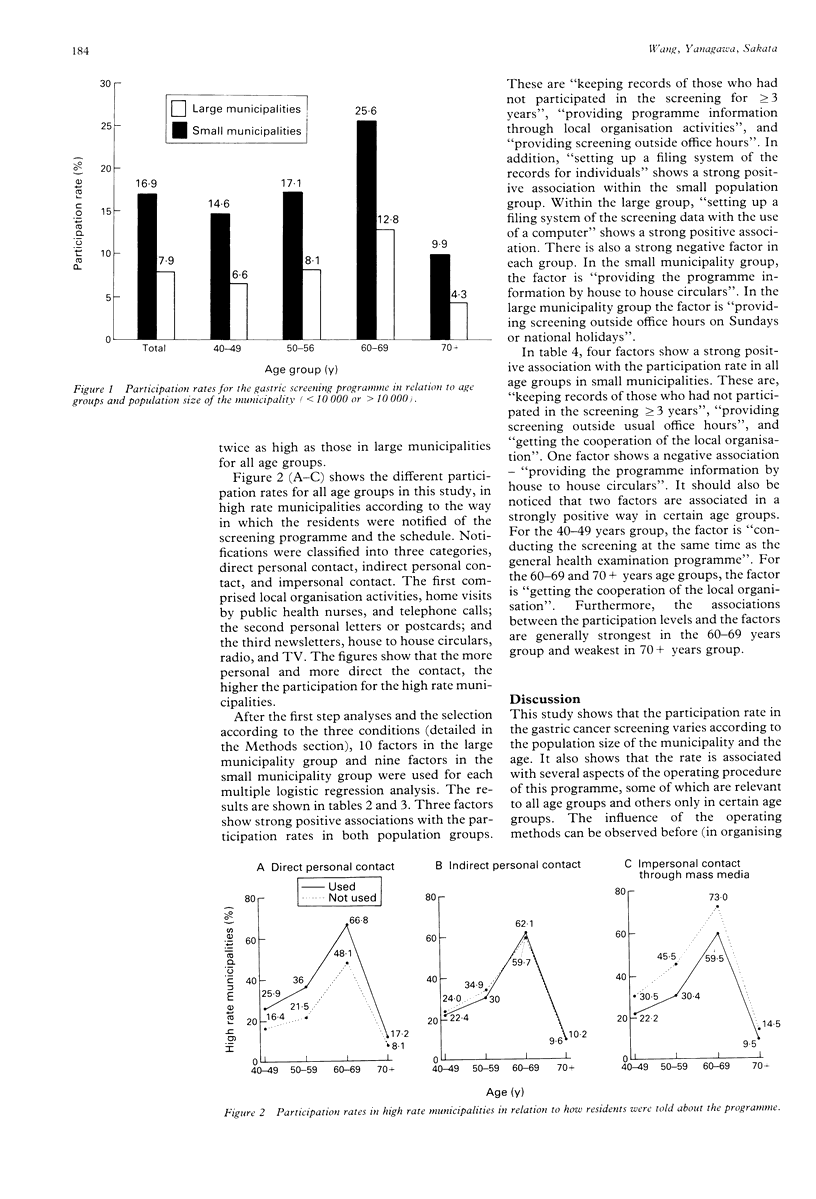
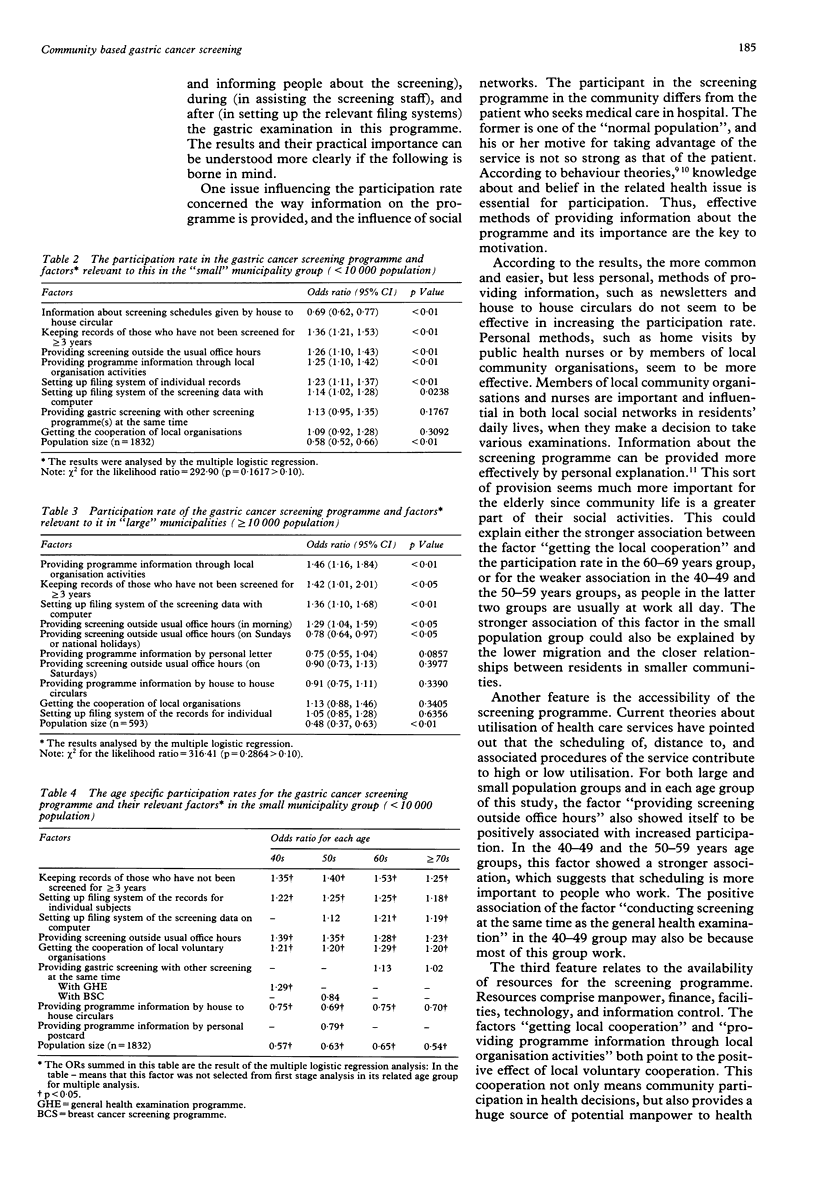
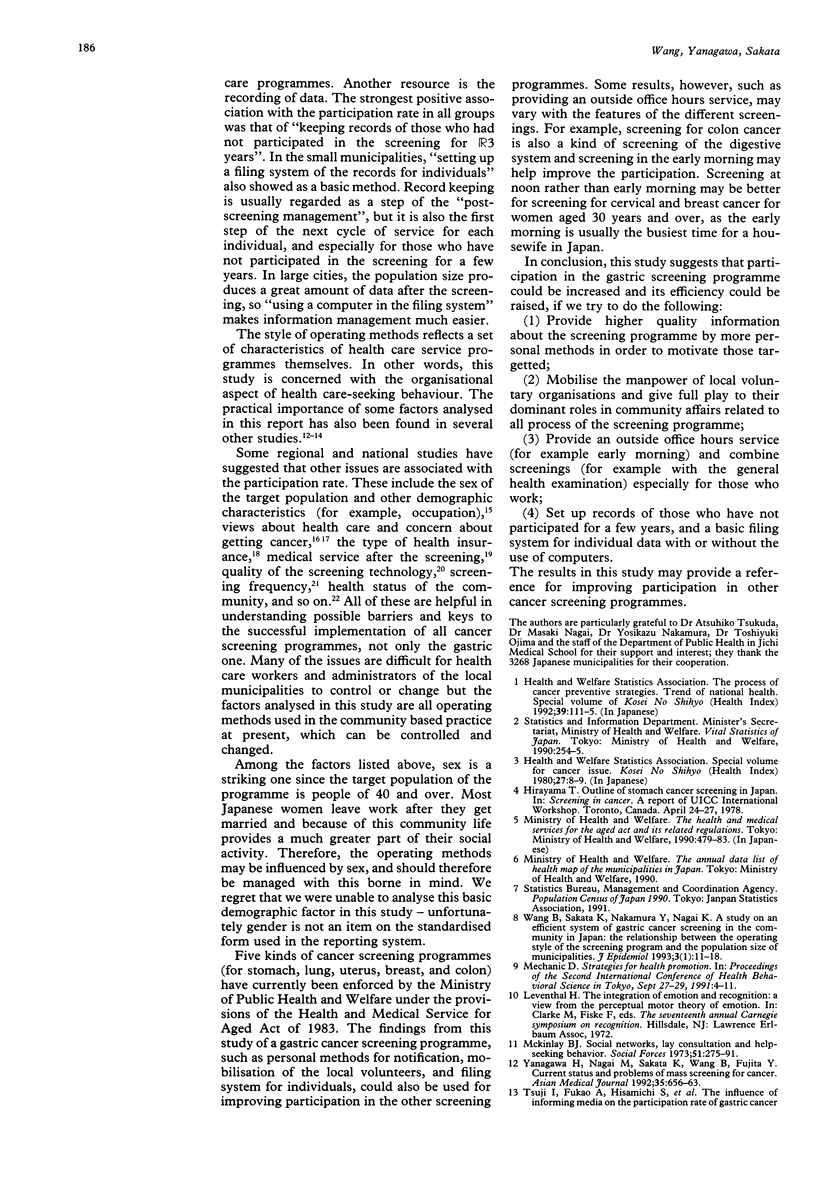
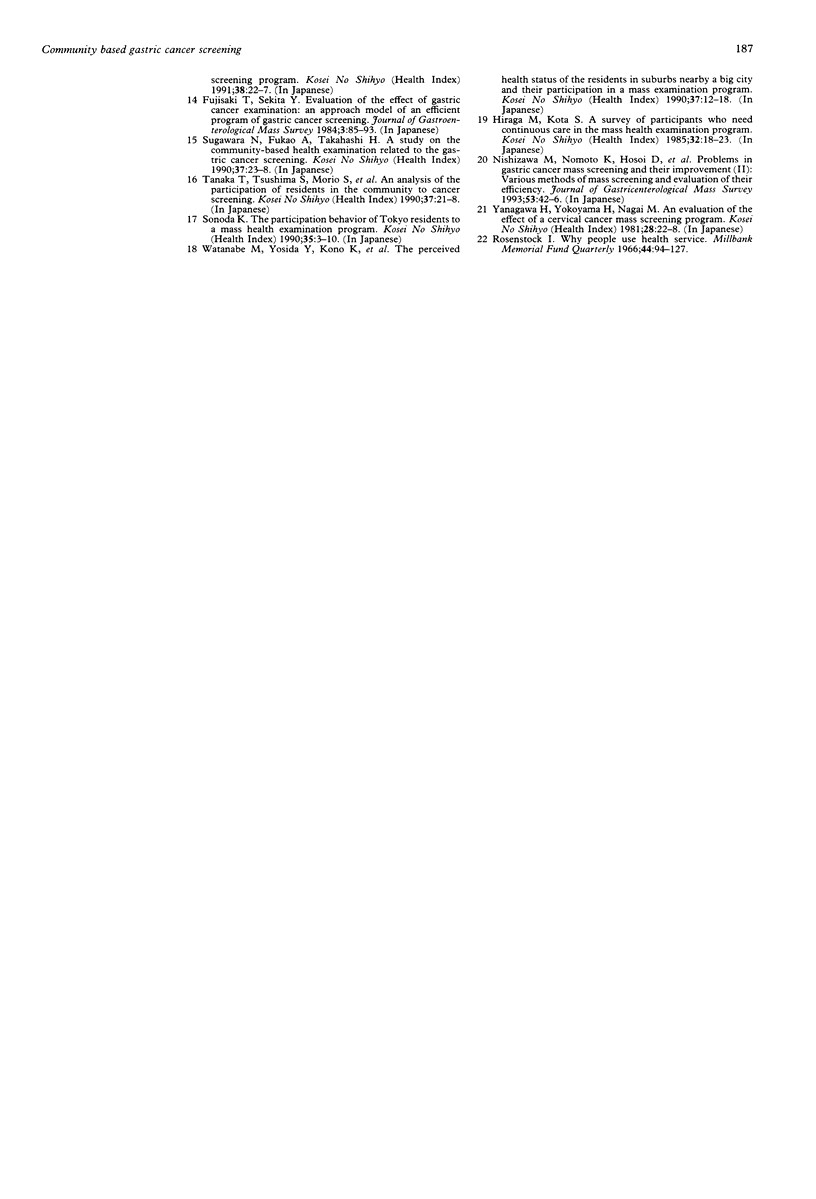
Selected References
These references are in PubMed. This may not be the complete list of references from this article.
- Rosenstock I. M. Why people use health services. Milbank Mem Fund Q. 1966 Jul;44(3 Suppl):94–127. [PubMed] [Google Scholar]


